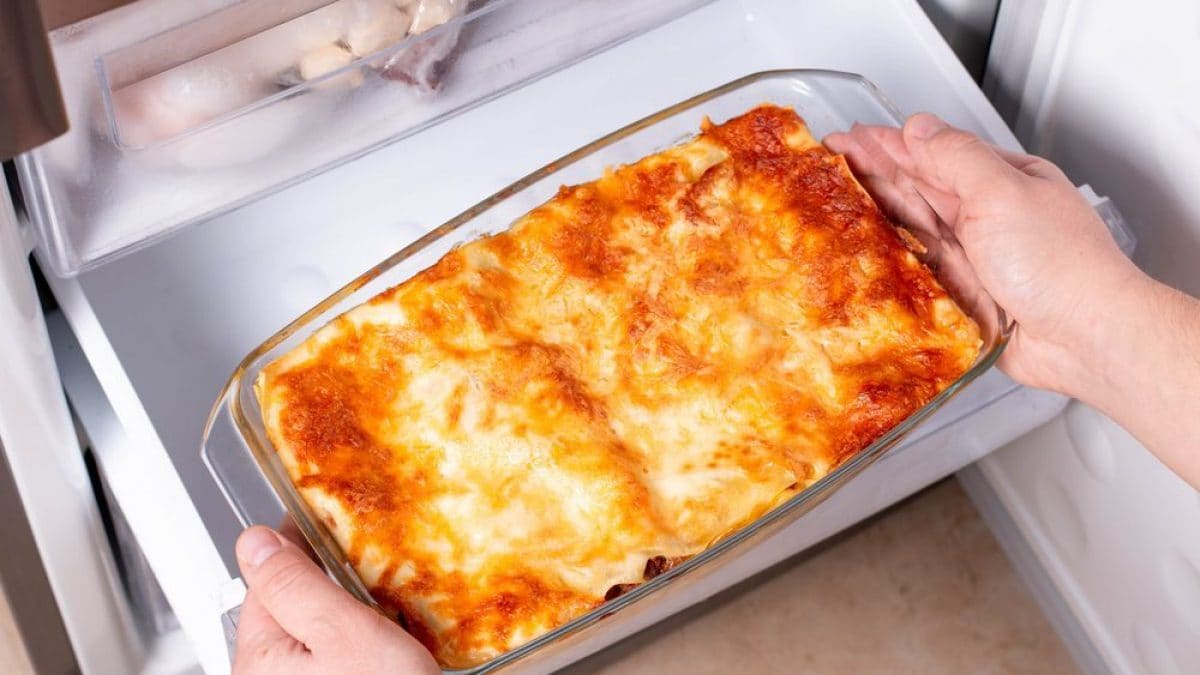
During the holidays, it's common to cook a variety of dishes that end up with leftovers: for example, baked pasta, timbales, or lasagna. To avoid waste, it's a good idea to know how to best freeze leftovers, as well as ready-made meals that haven't been cooked yet. Freezing baked pasta is an excellent way to always have a ready-made meal on hand, saving time and reducing waste. Here are all the methods and tips for freezing baked pasta to perfection.
Freeze The Entire Pan (Before or After Baking)
You can decide to freeze the entire pan either before or after cooking: in the first case, you'll better preserve the consistency of the ingredients, especially the pasta; in the second, you'll have a meal, a ready-made meal that simply needs to be thawed and reheated. Let's see how.
1. Before Cooking
This method better preserves the texture of the ingredients, especially the pasta and filling. Since the ingredients are not yet cooked, the overall flavor of the dish, once cooked after thawing, tends to be fresher and more like a freshly prepared dish.
If you freeze the pasta before cooking, it's important to ensure it's cooked al dente. Assemble the baked pasta in the pan you intend to use for baking. Let the baked pasta cool completely to room temperature: this step is crucial to prevent condensation from forming and heating up the freezer.
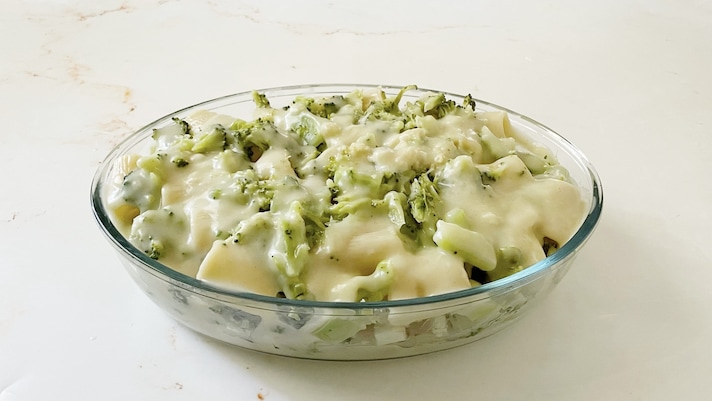
Cover the pan tightly: you can use several layers of plastic wrap (making sure it adheres tightly to the surface of the pastry to limit contact with air) and then wrap everything with one or two layers of sturdy aluminum foil. Alternatively, you can transfer the baked pastry to a freezer-safe container with an airtight lid (if the size allows). Transfer the pan or container to the freezer, making sure it's on a flat surface to prevent warping.
When you need to defrost it, transfer the pan from the freezer to the refrigerator: let it defrost for several hours, preferably overnight (about 8-12 hours or more, depending on the size and thickness of the pan). The pan will be defrosted when there are no longer any frozen parts to the touch. Once defrosted, you can bake it following your usual recipe, possibly adding a few extra minutes to ensure the center is nice and warm.
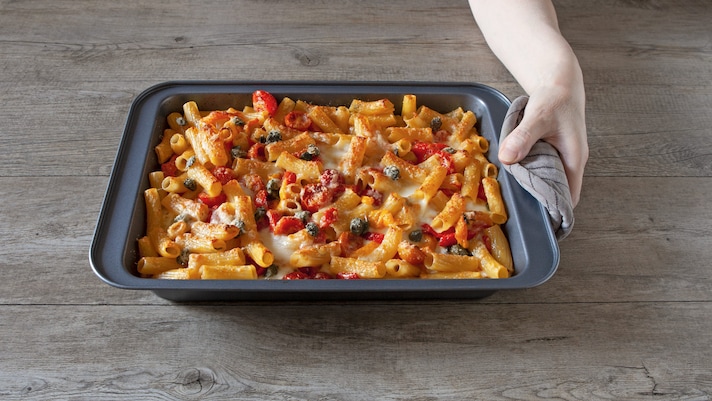
2. After Cooking
This method is useful if you've made a large portion, or an entire tray, and have some leftovers. It's a great way to efficiently store large quantities of leftover pasta bake, avoiding food waste. To do this, let the cooked pasta bake cool completely at room temperature. If you've chosen to freeze the entire tray, cover it as you would with uncooked pasta bake. Transfer the portions or tray to the freezer.
Be careful when thawing, as it can dry out too much. Transfer the pan from the freezer to the refrigerator and let it thaw for several hours or overnight. Once thawed, preheat the oven to about 320-350°F/160-180°C. You can cover the pan with new aluminum foil to prevent the surface from drying out too much while reheating. Bake for about 20-30 minutes, or until it's very hot in the center and the cheese is melted and lightly golden. Remove the foil in the last few minutes if you want a crispier surface.
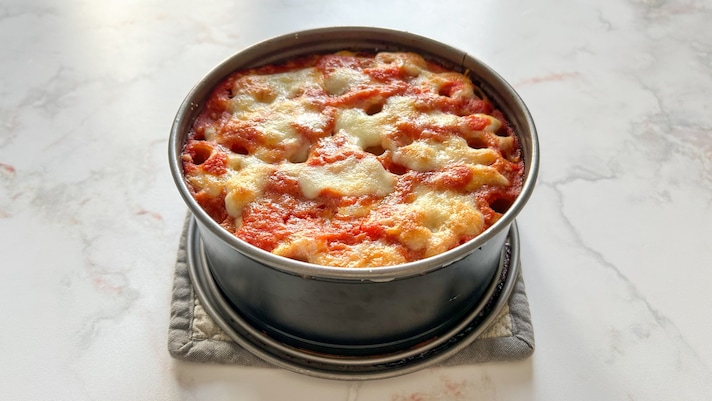
Freeze Portions of Baked Pasta
Freezing pre-cooked baked pasta in individual portions offers numerous advantages. First, it allows you to defrost exactly the amount you need for a single meal, avoiding waste and making it easier to manage individual diets. Individual portions also defrost much faster than a full tray, as well as allowing you to store food more efficiently. This makes it easier to defrost only what you will consume, reducing the temptation to refreeze any thawed leftovers (a practice not recommended for food safety). Finally, individual portions are perfect for transporting in airtight containers, for an outdoor lunch or to work.
How to do it? Let the cooked pasta bake cool completely, then divide it into individual portions. Wrap each portion tightly in plastic wrap and then in aluminum foil. Alternatively, place the portions in freezer bags (making sure to remove as much air as possible) or in individual airtight containers. Make sure the individual portions are thoroughly chilled before packaging. Arrange the portions in the freezer so they don't crush each other.
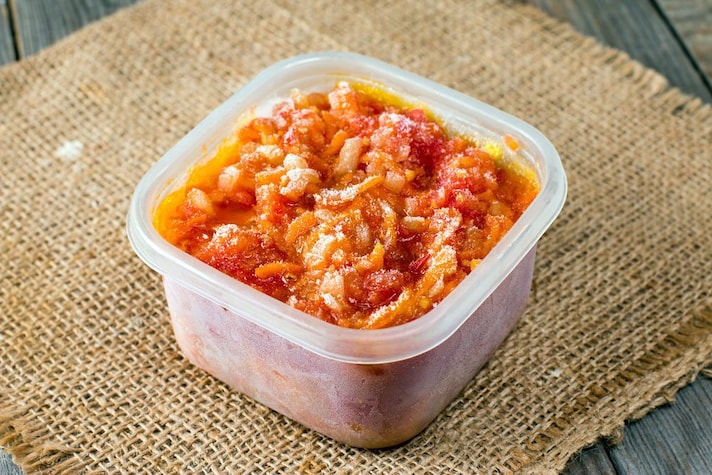
Tips for Freezing Baked Pasta
Regardless of your choices, there are some general tips to follow in any case, whether you prefer to freeze the pasta cooked, whole, or in individual portions.
- Complete cooling. This is the most important step to prevent excessive ice crystals from forming and overheating the freezer. Do not skip this step.
- Protection. Air is the number one enemy of frozen food, causing freezer burn: make sure baked pasta is well wrapped in plastic wrap or placed in an airtight container.
- Labeling. Always indicate the contents (e.g., "Lasagna," "Baked Pasta with Vegetables") and the freezing date. This will help you keep track of shelf life (generally 2-3 months for optimal quality).
- Quality ingredients. Use fresh, high-quality ingredients: freezing can slightly alter the texture of some foods, so starting with a quality base is essential.
- Cook "al dente." If you freeze pasta before cooking, make sure it's cooked "al dente." It will continue to cook when you next cook it after thawing.
- Sauces that are too thin or too thick. Too thin sauces may separate slightly after thawing: if possible, thicken sauces before freezing, but don't overdo it, as this can cause the sauce to dry out significantly.
- Vegetables. Vegetables with a high water content (such as fresh tomatoes or raw zucchini) may become a little mushy after thawing. If possible, cook them lightly before assembling the baked pasta to be frozen.
How to Thaw Frozen Baked Pasta
As for thawing, it's always best to do it in the refrigerator, so as not to interrupt the cold chain, especially if the ambient temperature is high. If you're in a hurry, you can bake the pasta directly from frozen, although the texture won't be exactly the same: remove the plastic wrap and aluminum foil and cover the pan with aluminum foil to prevent the surface from burning too quickly. Bake in a preheated oven at a moderate temperature (about 320-350°F/160-180°C) for significantly longer (even double the time), until it's completely hot and the cheese is melted and golden.
;Resize,width=767;)
